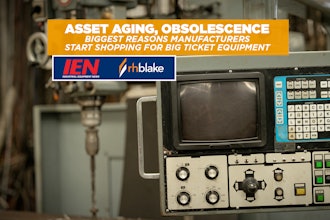3D-Printed Shoes Inspired by Bigfoot
Stephan Henrich is a German designer and architect. He recently created the Cryptide, a new fully 3D printed shoe.
The shoes were laser sintered with a flexible rubber-like TPE material on a Sintratec S2 System.
The upper shoe will fit more like a sock with a sole with a tactical tread. The shoe is printed as a single part. The idea is to have each shoe customized to each foot by scanning the appendage beforehand. But first, I need to know if I get a digital copy to wear the same kicks in the metaverse.
The design is inspired by creatures in cryptozoology, like Bigfoot or the Yeti, which are also called cryptids. If anything, the shoes should be comfortable, likely incredibly expensive, but leave a funky footprint.
I like it better than the Earth Moc concept. They call it a recovery shoe for light hiking, but they look more like 3D-printed crocs.
Robot Fingers
Researchers from the Max Planck Institute for Intelligent Systems have developed a soft haptic sensor named "Insight" that could be a gateway to providing fingertip sensitivity for robots.
Mimicking human touch has been elusive for robots. Insight uses computer vision and a deep neural network to accurately estimate where objects contact the sensor and how large the applied forces are.
The thumb consists of a soft shell built around a lightweight scaffolding. The skeleton holds up the structure much like bones stabilize finger tissue. The skin is made from an elastomer mixed with dark, reflective aluminum flakes, resulting in an opaque gray color that keeps out external light.
Inside the finger is a 160-degree fish-eye camera that records colorful images illuminated by a ring of LEDs.
When the sensor's shell is touched, the camera records images, and an algorithm detects the change in light in each pixel. Then, a trained machine-learning model maps out where the finger is contacting an object, determines how strong the forces are and indicates the force direction, all in a fraction of a second.
The research project is a significant step toward robots feeling as accurately as humans and animals.
Planes Outfitted with Bionic Sharkskin
Lufthansa Technik and BASF believe they have created a way to save 5 million tons of jet fuel per year.
The team has created AeroSHARK, a durable bionic film that mimics sharkskin to optimize airflow. The film has a barely perceptible ribbed texture of small protrusions or riblets. The sharkskin comes in squares with millions of prism-shaped riblets, each about 50 micrometers high.
When applied to the aircraft, it reduces friction and improves lift when attached to the wings.
The film can easily be applied to larger commercial aircraft and withstand significant temperature shifts, pressure differentials and even ultraviolet radiation.
On Wednesday, Swiss International Airlines announced that it would become the first passenger airline in the world to use AeroSHARK aircraft skin technology. All twelve of the airline's Boeing 777-300ER aircraft will be shark-skinned.
About 950 square meters of the film will be applied to each aircraft's fuselage and engine nacelles. It's not a huge result — it will only make the fleet about 1.1% more fuel-efficient.
However, on just 12 aircraft, it will reduce the airline's annual fuel consumption by more than 4,800 metric tonnes and cut the total annual carbon dioxide emissions of its Boeing 777 fleet by up to 15,200 tonnes.






















